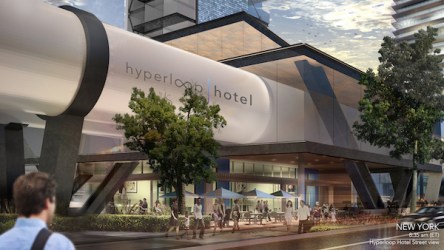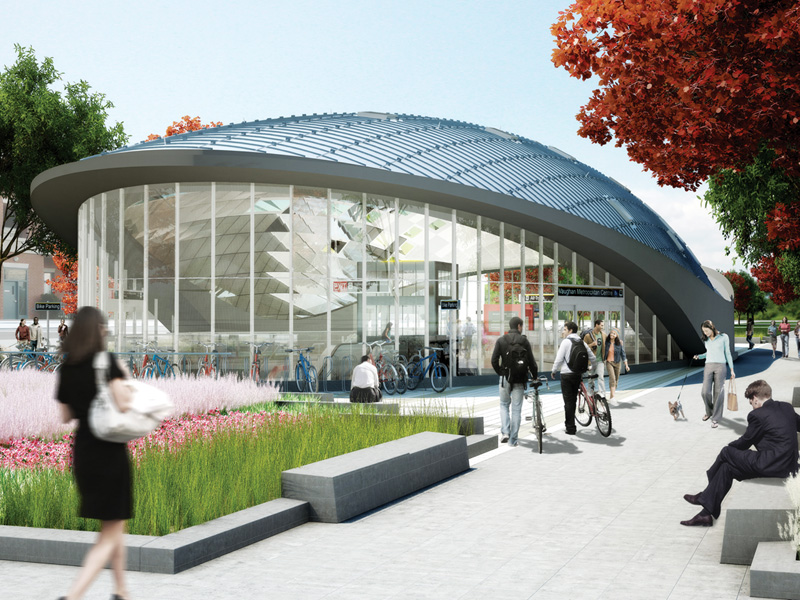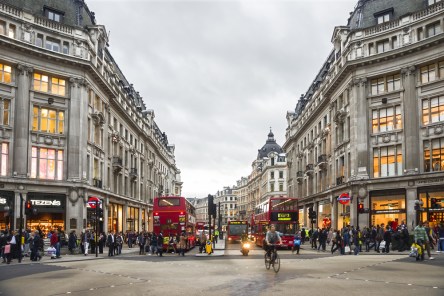“This telework phenomenon has shown people that they don’t have to be in the office all the time,” notes Tim Lomax, research fellow at the Texas A&M Transportation Institute. That realization has prompted many people to rethink options for getting to work – or if it’s necessary at all. Is a physical presence at work necessary, and if so, can commuting be made easier, more pleasant and environmentally conscious? “Tele” might be a permanent prefix for a long time. A survey of Californians released by the University of Southern California in April, for example, reported that more than half of telecommuting workers want to keep working from home at least three days a week after the pandemic ends. Just 18% wanted to go back to in-person work every day, while 31% said they would be happy working from home five days a week. Some businesses, seeing no harm to their profitability from remote work, might allow telecommuting as a full-time option. Looking at it from the employer’s point of view, about 30% of respondents to a poll of more than 300 North American employers by global advisory firm Willis Towers Watson said they expect about 30% of their full-time employees to work from home in three years, up from 5% three years ago. “Lots of [workers] want something in between their Zoom-based present — which has tested work-life boundaries and left many feeling isolated from their colleagues — and a full return to daily commuting that drained our time, energy and wallets,” says Nico Savidge, reporting in the Marin Independent Journal. But Lilac Nachum, a professor of international business at Baruch College, says that knowledge and innovation-based industries have the least to gain from working from home permanently because a significant amount of creativity,...
Livable Communities Act...
Affordable Housing + Transit
The Livable Communities Act of 2021 aims to develop transit alongside affordable housing, creating more efficient and equitable access to major job hubs and neighborhoods. The act attempts to tackle two contentious issued for Americans. The Livable Communities Act of 2021 The first step is to create an Office of Sustainable Communities within the Department of Housing and Urban Development (HUD). The division would “promote interagency coordination on the development of affordable housing, transit systems, and other community needs.” The Office of Sustainable Communities would have its own credit facility. From there, regional development grants would be available through the Comprehensive Planning Grant Program. Eligible recipients would demonstrate partnerships between local governments, city planning, and Indian Tribes (where applicable) and other community members to create “sustainable, affordable housing with access to transit.” In addition to sustainability, the Act includes a clause to prioritize health-conscious housing and reduce housing-related health hazards. The Act reserves 25% of funding for high-poverty communities. Such areas are greatly affected by long waitlists for affordable housing as well as a lower quality of living and a high concentration of health concerns. Sen. Bob Menendez (D-N.J.) introduced the legislation supported by Sens. Catherine Cortez Masto (D-Nev.), Chris Van Hollen (D-Md.), Ron Wyden (D-Ore.), Jack Reed (D-R.I.), Kirsten Gillibrand (D-N.Y.), Alex Padilla (D-Calif.), and Richard Blumenthal (D-Conn.). Menendez says, “Our communities are stronger when hardworking families can afford to live close to where they work. As the nation faces an affordable housing crisis, we don’t want to see teachers, first responders, grocery store clerks, restaurant staff, and other essential workers be priced out of the neighborhood.” He continues, “Creating ‘livable communities’ is all about connecting workers to good-paying jobs through expanded affordable housing options and access to good public transportation by inextricably and...
Public Transit
On the Move Again
What does the future hold for public transit – bus, light rail and subway – after the pandemic’s disruptions? Nationally, public transit ridership dropped by nearly 80% in April 2020 and remained more than 60% below 2019 levels through the rest of the year, with systems in San Francisco, Washington, D.C., Boston, Chicago, New York City, Seattle and Atlanta all losing more than half their ridership. “The fallout for public systems like transit has been nothing less than monumental,” says Government Technology, which covers information technology’s role in state and local governments. Public transit filled a vital need as COVID-19 raged, delivering workers to essential jobs at hospitals, pharmacies, grocery stores, fire and police stations and utility companies, and transporting medical patients, medicines, meals and critical supplies. Crews stepped up efforts to clean, disinfect and ventilate vehicles and facilities. Some agencies adopted new technology to better monitor system use during the pandemic and be more responsive to changing needs afterward. More recently, an infusion of federal emergency assistance has helped stabilize transit organization finances. Proposed infrastructure legislation includes several measures to expand bus routes and rail lines and convert gas and diesel vehicles to zero-emission electric vehicles. As of May, about 50% of transit riders nationwide had returned compared to pre-pandemic times, according to the American Public Transportation Assn. Roads & Bridges, a trade publication for the transportation construction and maintenance marketplace, notes that the pandemic “has elevated public awareness and appreciation for the vital role transit plays in our communities.” New challenges arise But even as the pandemic wanes in some regions, new challenges arise for public transit, which less than 6% of Americans used to commute to work before the pandemic. Work-from-home arrangements appear to be a durable trend with little or...
Hotel Revolution
Hyperloop Concept
Living in a futuristic utopia might be closer to reality than we realize. Brandan Siebrecht, a graduate architecture student at the University of Nevada, Las Vegas, revealed an ingenious hotel design that combines transport with accommodation. The concept aims to transform Elon Musk’s innovative Hyperloop One into a high-speed transit hotel. The Hyperloop Hotel shoots guests through tubes from city to city in a blink of an eye, all while never leaving their pod-like rooms. The concept enables travelers to manage everything from reservation, check-in and check-out from a device or a smartphone app. Basically, this futuristic transit system involves using magnets to levitate pods inside an airless tube, creating conditions in which the floating pods shuttle at near supersonic speeds. Guests would feel almost no sense of motion. The hotel concept uses sustainable, modular design in the form of shipping containers, all outfitted for luxury. Featuring customizable layout and design, each capsule includes an office, bedroom, bathroom and a living room. When arriving at destination, the shipping container “suite” simply docks to a modular hotel. 13 U.S. destinations Siebrecht’s proposal includes the following travel stations across the U.S.: Austin, Texas; Boston; Chicago; Denver; Las Vegas; Los Angeles; Nashville, Tenn.; New York; Portland, Ore.; San Francisco; Santa Fe, N.M.; Seattle; Washington, D.C. An award-winning hotel concept The Hyperloop Hotel is this year’s student winner of the Radical Innovation Awards, a competition for imaginative hotel designs, because it combines the comfort of a hotel with the convenience of speedy transportation, all in one. A jury of seven hotel investors, developers and architects selected Siebrecht’s idea out of over 65 submissions from 24 countries. The Radical Innovation team rewarded him $10,000 to develop the concept further. Costs and feasibility Siebrecht estimates each hotel will cost $10...
Vaughan Metropolitan Centre
Transit Centered Design
Building along public transit lines has long been a popular way to ensure that traffic flows easily to a retail property. A lack of transit options does not have to deter an otherwise promising development. At Vaughan Metropolitan Centre in Canada, Yardi client Calloway REIT demonstrates how to build smart, minimize sprawl, and convince transit authorities to collaborate when funds are scarce. Calloway has built its reputation on creating strategically located shopping centers of exceptional quality. When considering the next project, team leaders took a few factors into consideration: Canada hasn’t seen the construction of an enclosed shopping mall in over 20 years. The City of Vaughan is growing but lacks an adequate downtown to meet the expectations of businesses and residents. The market was ready for something big, new and exciting—without the downside of urban sprawl and traffic congestion. Calloway, in a 50/50 joint venture with SmartCentres, stepped forward to address those factors with a project in the burgeoning Vaughan Metropolitan Centre (VMC), a pedestrian-friendly hub for businesses, residences, and entertainment. Calloway’s carefully selected locations can be easily accessed by more than 85 percent of Canadians. Keeping with this tradition, the company selected a 50 acre portion of a 442-acre parcel in Vaughan, part of York Region northwest of Toronto, as the project’s site. It was ideal for Vaughan’s new downtown and it had ample space for retail, office, and residential accommodations. There was only one major problem: transit lines stopped in Toronto nearly 25 miles away. A lack of transit access would adversely affect the ability to fund and market the project. Studies by Urban Land Institute state that 91 percent of public leaders regard transportation infrastructure quality as the top influencer of real estate investment and development decisions. 86 percent of private leaders rated transportation infrastructure as the second highest priority. The households of the future—Gen Y and Millennials—are steadily seeking out neighborhoods and employment centers that facilitate public transit use as an alternative to car ownership. Public transit tops many lists, and the vision of VMC couldn’t thrive without it. Though the importance of public transit is growing, the City needed an incentive to direct its limited funds to a transit station at VMC. APTA recorded $2,205.6 million regular users bringing in a total operating revenue of $3,762.7 for all of Canada. Those figures aren’t groundbreaking, but studies suggest that the profitability of public transit will only improve. If the City of Vaughan wanted to grow, it was in its best interest to support the vision of VMC. The three entities met halfway. Calloway and SmartCentres donated 2.5 acres of land to Toronto Transit Commission (TTC) for the new station. “People ask, ‘How did you strategically make this happen?’ As stupid as it sounds, we just waited for the phone to ring,” laughs Rudy Gobin, Executive Vice President of Asset Management at Calloway REIT and former Executive Vice President, Finance and Operations of SmartCentres. “We already owned the land. The City called and said they wanted to put a subway stop on the street edge of the property. It took us about six months to negotiate this but we said, ‘Why don’t you put it in the middle of the property and we’ll give you the land?’ They wanted 2.5 acres of land in the middle of 50 acres. They said sure and that was that. And of course, we then acquired additional land nearby.” Toronto York Spadina Subway Extension Project provided additional funding. The construction on Vaughan Centre Station at VMC was soon underway. Vaughn Centre Station will connect residents of York Region to Downtown Toronto. The new station will be the northernmost point along the TTC network, and only the second station operated by TTC outside of the City of Toronto. Mitchell Goldhar, President and Owner of SmartCentres says, “This joint venture with Calloway will leverage the strengths of both companies and will...
UK Think Tanks
Emerging Market Insight
Yardi will host a series of think-tanks that unite industry professionals in discussion on the hottest issues facing real estate in the UK. This week: what are the prospects for property as an asset class? A new plan may draw investors from the capital to previously overlooked northern towns. During the global recession, emerging markets remained steady as developed markets faltered. Since the recovery, the major markets–US, Europe and Japan—have recaptured the attention of investors. But will London’s assets continue to lead England or are regional markets promising prospects? It could behoove investors to look beyond London’s city limits for growth opportunities. The capital’s highly competitive real estate market offers few new opportunities; the bulk of existing investors are vying for coveted space in the city’s 70-80 successful high street locations. It would be a shame for investors that do not make it into those locations to take their resources outside of the country. The solution: transform London’s regional markets into more attractive prospects. The Local Growth Fund has allocated £12bn to merge Leeds, Sheffield, Manchester, and Liverpool into the “northern powerhouse.” Supporters do not plan to siphon London’s businesses or big investors. Instead, the emphasis will be placed on nourishing successful local businesses and attracting new resources. Hopes ride on the dawn of new investors, those beat out of opportunities in London, for example, and those who are new to the arena, such as Chinese investors who have received more flexible access to foreign markets in recent years. As a rising business center, the northern powerhouse properties can be developed to fit modern tenants’ demands: Occupiers of the new business center will be greeted with competitive rents, convenient mixed-use facilities with eco-friendly features, and pedestrian friendly access. The northern powerhouse can be quite appealing in...





